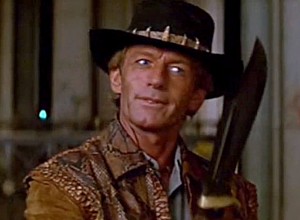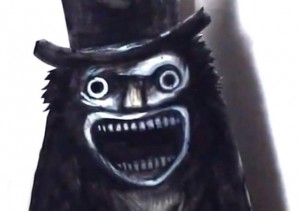Within industry publications and academic reports, much has been written about the nature of distribution and exhibition of feature films in Australia. Particular attention has been paid to the fact that many independent Australian films are unable to secure the backing of a prominent distributor, and are thus unable to compete theatrically with major Hollywood productions, whose formidable prints & advertising (P&A) budgets ensure they find the largest audience possible by maximising the number of screens they appear on.
Indeed, with the exception of 2004’s Strange Bedfellows, the highest grossing Australian film at the domestic box office by year since 2000 has had the backing of a major international distribution company, such as Universal, Roadshow, eOne, Paramount and Fox (Screen Australia, 2015).
Quality notwithstanding, are there trends in the types of Australian films distributors look for as being worth backing theatrically? Which types of films tend to perform well theatrically?
Since 2000, the proliferation of digital video has effectively lowered the entry barrier for independent Australian filmmakers to enter the market. While a theatrical release is beyond the means for many of these filmmakers, a considerable number have found success – albeit moderate – via digital distribution platforms, namely video on demand (VOD) services such as iTunes, Google Play and Amazon, amongst others.
Are such new platforms encouraging the production of particular types of films to meet the voracious demands of the home entertainment mark?
SUCCESS ON THE BIG SCREEN
Reviewing Screen Australia (2014) data about the Top 5 grossing Australian films at the domestic Box Office between 1988-2014, one finds some common patterns in the types of films which resonate with local audiences.
The evidence suggests that Australian films which represent some element of iconic Australia, be it the landscapes of outback Australia, quintessential Australian culture – either indigenous or settler – or the dramatisation of key historic events, are popular draw cards for Australians attending the cinema.
In 1988, the highest grossing Australian film at the domestic Box Office was Crocodile Dundee 2, which followed on from the massive success of its predecessor in depicting a fantastical version of Australia with heroic, laconic characters and wild, untarnished nature. The recent successes of Wolf Creek (2005) and Wolf Creek 2 (2013) fit largely the same mythological ilk, except that the heroic protagonist of Crocodile Dundee has been swapped for an anti-hero madman, while retaining all of the former’s ockerisms.
This heightened cum romantic vision of Australia is also played out in films such as Australia (2008) (the highest grossing local film of 2008 and the second-highest grossing in 2009) and Red Dog (2011), the highest grossing film of 2011.
Increasingly, audiences view going to the cinema as an event and cite socialising as one of the key reasons for watching a film at the cinema (Screen Australia, 2012). While each of the films mentioned above offer significant degrees of spectacle (the ‘big-screen experience’ coming in at number 2 on cinema-goers list), they also – in a political sense – create a cohesion amongst their audience, by depicting a vision of Australia and Australian-ness which a domestic audience can share, regardless of whether they agree or disagree with the version of Australia which is presented to them, or are merely amused or bemused by it. Thus such films effectively create a common denominator within the audience.
The same may be said of films such as The Water Diviner (2014) (the highest grossing Australian film domestically in 2014), which depicts a personal story amidst the background of the First World War, again something which domestic audiences recognise as a national history which is shared, regardless of their political inclinations. Although it would be remiss to overlook the impact Russell Crowe’s starring role had on the film’s domestic box office takings ($12.3 million AUD). The highest grossing film of 2003, Ned Kelly (2003), also taps into a shared history amongst Australian audiences.
In the absence of spectacle (notably provided by Baz Luhrmann’s massively successful films, which have topped the domestic box office in 1992 (Strictly Ballroom), 2001 (Moulin Rouge), 2008 (Australia) and 2013 (The Great Gatsby)), the depiction of quintessential Australian characters and culture has also proven a consistently successful ingredient for domestic box office success. This has been the case (with varying degrees of success) for films such as The Castle (1997), The Dish (2000), Crackerjack (2002), Strange Bedfellows (2004) and The Sapphires (2012), which have each been the highest grossing Australian film for their year of release.
THE HOME ENTERTAINMENT MARKET
Has the rise of Video on Demand (VOD) – and its overtaking of DVD and Blu-ray as the most popular home entertainment platform – had an impact on the types of feature films Australian filmmakers are producing?
In the absence of spectacle and star power, many low-budget, independently produced Australian are unable to secure major (if indeed any) theatrical distribution to viably compete with big budget Hollywood fare.
A considerable amount of academic literature has been focused on the proliferation of Australian horror films since 2000. In particular, the mainstream success of Saw (2004) and Wolf Creek (2005) demonstrated the profitability of the genre. While Saw (2004) did not receive public funding in Australia, its success and the lucrative franchise which it spawned prompted funding agencies to provide more support to this genre, which has often been regarded as not promoting Australian cultural interests on screen (Ryan, 2010). What has followed since the success of these films has been an extensive catalogue of local horror films, from micro to low-budget indie efforts (When Evil Reigns (2006) and Lake Mungo (2007)) to U.S. studio backed bigger budget flicks made for export (including Rogue (2007) and Daybreakers (2008)).
Horror films are well suited to VOD in a number. They are relatively cheap to produce and are less reliant on the presence of a star actors-actress to boost their appeal to audiences compared with other genres, such as drama and comedy. Often, the less polished production values that such low-budget films possess can enhance their sense of realism and atmosphere. This is particularly the case for films inhabiting the ‘found-footage’ sub-genre (e.g. The Blair Witch Project, Paranormal Activity, Lake Mungo, The Tunnel).
There is a strong international demand for horror films and they tend to export well on account of the universality of the genre’s conventions.
CASE STUDIES
The Babadook (2014)
With a production budget of approximately AUD$2 million, The Babadook (2014) tells the story of a widowed mother who desperately tries to protect herself and her son from a malevolent storybook character come to life.
In Australia, The Babadook received a limited theatrical release in May 2014 and ultimately grossed AUD $268,044. On account of the film’s low-key arrival into theatres and its modest advertising spend, positive word-of-mouth was vital to building up a significant audience for the film. Given the costliness of keeping the film in theatres, by the time any significant buzz could have been created about the film, the film had already disappeared from cinemas.
In the United States, the film appeared first on cable television for an exclusive 30-day period, before appearing in theatres. By appearing first on its home entertainment platform, the film was able to build a word of mouth before appearing in theaters. It appeared initially on three screens before widening to eighty, which again allowed a buzz to build gradually around the film without the expenditure of a wider theatrical release. Ultimately, the film grossed USD $950,000 in U.S. cinemas (Screen Australia, 2015).
With its non-star cast, limited locations and its story centered around the unresolved trauma and grief experienced by the protagonist in the aftermath of her partner’s death, The Babadook possessed none of the usual attractions for casual cinema goers. However, by tapping into the home entertainment market first in the U.S., the film was able to bypass costly theatrical advertising and leverage its fervent horror fan base to build enough positive buzz to ensure that its theatrical release had some success.
The Mule (2014)
Another interesting case study of an Australian feature film which has achieved success through VOD is the black comedy The Mule, also released in 2014. With its targeted demographic (males, 18-44), non-star cast and locationally-contained story, the film didn’t possess the ingredients which would ensure that audiences would be willing to pay a premium to see the film on the big screen. The producers and distributor of the film released this, and the film instead premiered on VOD, supported by an enhanced advertising campaign (Screen Australia, 2015). At its lower price point, The Mule performed well, topping iTunes (Carroll Harris, 2014).
References:
Carroll Harris, L. (2014, November 25). Australian film The Mule skips cinemas to top iTunes chart. The Guardian (Australian Edition). Retrieved from: http://www.theguardian.com/film/2014/nov/25/australian-film-the-mule-skips-cinemas-to-top-itunes-chart
Ryan, M. D. (2010). Australian cinema’s dark sun: the boom in Australian horror film production. Studies in Australasian Cinema, 4(1), 23-41.
Screen Australia. (2012). What to Watch? Audience Motivation in a Multi-Screen World. June, www. screenaustralia. gov. au/getmedia/4972fa65-caa5-4235-86be-1800e4a2815b/Rpt_ WhattoWatch. pdf.
Screen Australia. (2014). Top five Australian feature films in Australia each year, and gross Australian box office earned that year, 1988-2014. Retrieved from: http://www.screenaustralia.gov.au/research/statistics/boxofficeaustraliatop5.aspx
Screen Australia. (2015). Issues in Feature Film Distribution. July, https://www.screenaustralia.gov.au/getmedia/9598b9f7-321b-45f3-b5e8-7870166487fc/IssuesInFeatureFilmDistribution_2015-07-30.pdf




